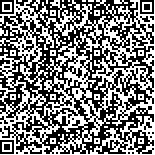| 引用本文: | 曾华平,陈丹,马国萍,陈红,朱仙慕,刘秀棉,洪丽婷,余惠珍.玳玳果黄酮降脂提取物体内效应组分排泄动力学研究[J].中国现代应用药学,2019,36(15):1870-1875. |
| ZENG Huaping,CHEN Dan,MA Guoping,CHEN Hong,ZHU Xianmu,LIU Xiumian,HONG Liting,YU Huizhen.Study on the Excretion Pharmacokinetics of the in Vivo Active Parts of Daidai Flavonoids Lipid-lowering Extract[J].Chin J Mod Appl Pharm(中国现代应用药学),2019,36(15):1870-1875. |
|
| 本文已被:浏览 1897次 下载 1021次 |

码上扫一扫! |
|
|
| 玳玳果黄酮降脂提取物体内效应组分排泄动力学研究 |
|
曾华平1,2, 陈丹1, 马国萍1, 陈红2, 朱仙慕1, 刘秀棉1, 洪丽婷1, 余惠珍2
|
|
1.福建中医药大学药学院, 福州 350122;2.福建省立医院干部特诊科临床老年病研究所, 福州 350001
|
|
| 摘要: |
| 目的 建立同时测定大鼠尿液及粪便中提取物效应组分新橙皮苷和柚皮苷含量方法,研究大鼠口服玳玳果黄酮降脂提取物后的尿药排泄动力学及排泄特征。方法 采用UPLC-MS/MS建立效应组分新橙皮苷及柚皮苷在大鼠尿液及粪便的定量分析方法,计算口服玳玳果黄酮降脂提取物后不同时间点新橙皮苷及柚皮苷在尿液及粪便中的排泄率,并以亏量法计算尿液中的消除半衰期及消除速率常数,评价大鼠口服玳玳果黄酮降脂提取物后尿药排泄动力学及排泄特征。结果 所建立的UPLC-MS/MS定量分析方法专属性良好、标准曲线及线性范围良好,方法准确度与精密度、定量下限均符合有关规定,该方法能够满足大鼠尿液及粪便中效应组分的定量检测需要;口服72 h后,大鼠尿液中新橙皮苷、柚皮苷的平均累计排泄率分别为(1.76±0.76)‰和(1.39±0.57)‰;大鼠粪便中新橙皮苷、柚皮苷的平均累计排泄率分别为(52.45±6.30)%和(51.57±4.80)%;口服后效应组分新橙皮苷及柚皮苷在尿液及粪便中的排泄量分别在24~36 h和4~8 h达到峰值;72 h后仍有药物经尿液排泄,给药后24 h粪便累计排泄率便达坪值;亏量法计算得新橙皮苷消除速率常数为(0.080±0.021)·h-1,消除半衰期为(9.41±3.22)h,柚皮苷消除速率常数为(0.077±0.017)·h-1,消除半衰期为(9.51±2.97)h,新橙皮苷及柚皮苷的动力学参数间差异无统计学意义。结论 口服给药后效应组分原形即通过粪便较快地排出体外,粪便排泄是效应组分排出体外的主要途径,新橙皮苷及柚皮苷经尿液排泄的特征无明显差异。 |
| 关键词: 玳玳果黄酮降脂提取物 新橙皮苷 柚皮苷 排泄动力学 |
| DOI:10.13748/j.cnki.issn1007-7693.2019.15.004 |
| 分类号:R917.101 |
| 基金项目:福建省自然科学基金(2018J01253);福建省医学创新项目(2016-CX-45);福建省科技计划项目(2010Y2004) |
|
| Study on the Excretion Pharmacokinetics of the in Vivo Active Parts of Daidai Flavonoids Lipid-lowering Extract |
|
ZENG Huaping1,2, CHEN Dan1, MA Guoping1, CHEN Hong2, ZHU Xianmu1, LIU Xiumian1, HONG Liting1, YU Huizhen2
|
|
1.Department of Pharmacy, Fujian University of Traditional Chinese Medicine, Fuzhou 350122, China;2.Institute of Senile Disease, Fujian Provincial Hospital Cadre Special Clinic, Fuzhou 350001, China
|
| Abstract: |
| OBJECTIVE To establish a method for the simultaneous determination of the active part contents (neohesperidin and naringin) in rat urine and feces. To study the urine drug excretion pharmacokinetics and characteristics after the extract was given to the rats orally. METHODS UPLC-MS/MS was used to establish a quantitative analysis method for the active parts(neohesperidin and naringin) in rat urine and feces. The excretion rates of neohesperidin and naringin in urine and feces at different time points were calculated after the extract was given orally. The elimination half-lives and elimination rate constants in urine were calculated by using sigma minus method. The urine drug excretion pharmacokinetics and characteristics was evaluated after the extract given to the rats orally. RESULTS The UPLC-MS/MS quantitative analysis method established had good specialization, standard curve and linear range. The accuracy, precision, and quantitative lower limit of the method all conformed to relevant standards. The method was able to quantitatively determine the active parts in rat urine and feces. The average cumulative excretion rates for neohesperidin and naringin in rat urine were (1.76±0.76)‰ and (1.39±0.57)‰ respectively 72 h after oral administration, and the values in rat feces were (52.45±6.30)% and (51.57±4.80)% respectively. The excretion amount for neohesperidin and naringin in urine and feces reached the peak at 24-36 h and 4-8 h after oral administration respectively. The active parts were still detectable in urine 72 h after oral administration, but the cumulative excretion rates in feces reached the plateau at 24 h. By using sigma minus method, the elimination rate constants for neohesperidin was calculated to be (0.080±0.021)·h-1, and the elimination half-life was (9.41±3.22)h. The values for naringin were (0.077±0.017)·h-1 and (9.51±2.97)h respectively. The difference in the kinetic parameters between the two active parts had no statistical significance. CONCLUSION After oral administration, the original compounds of the active parts are quickly excreted in feces. Feces excretion is the main excretion way of the active parts. There are no significant difference in the excretion characteristics of the two active parts in urine. |
| Key words: Daidai flavonoids lipid-lowering extract neohesperidin naringin excretion pharmacokinetics |
